How To Successfully Crowdfund: 7 Stats from 100,000 Crowdfunding Campaigns On Indiegogo
Crowdfunding has certainly become an extremely popular means of raising money for projects, but some campaigns are more successful than others. Here we look at seven different crowdfunding stats from a recent study that musicians should keep in mind when looking to raise capital for their next artistic endeavor.
______________________________________________
Guest Post by Amy Yeh on the Indiegogo Blog
If you’ve decided to start a crowdfunding campaign, it’s probably for an idea that you’ve been thinking about for awhile. You’re ready to take charge and turn your dream into a reality. Crowdfunding is an excellent option for anyone to fund what matters to them, whether it’s a band’s latest album, short film, hot new gadget, college tuition, medical expenses… the list goes on and on. We want every campaigner to be set up for success, so we took a look at the numbers and statistics behind 100,000 Indiegogo campaigns* to see what’s working and what’s not. Here are 7 key stats about crowdfunding that every campaigner should know.
1. 30 day campaigns work best
Setting a reasonable and realistic amount of time for your campaign to run is crucial for your success. You want to make sure you give yourself and your community ample time to rally behind the cause to reach your goal. Of all the campaigns we looked at that met their goals, nearly a third of them (30.5%) ran a campaign between 30 to 39 days long. Consider how long you can commit to being engaged with your campaign as well as your community. You’ll want to be able to build interest, maintain momentum and keep your audience engaged. If you find that 30 days is not enough, you can extend your campaign to 60 days. Keep in mind that this option is more like running two 30 day campaigns rather than one 60 day campaign. This sort of timeframe might work best for you in terms of marketing and resources.
2. Keep your campaign page updated
One of the most important crowdfunding tips we share over and over is to keep updating your campaign page after the launch. No matter what type of project you have, you want to keep your backers in the loop about any progress you’ve made, whether it’s hitting 30% of your goal, press mentions or new perks you decided to add. Updates to your campaign are emailed to anyone who contributes, therefore they are the most direct way to engage with contributors post-launch. On average, successful campaigns post at least 4 campaign updates. Having an updated campaign page is the best way to communicate with your backers, informing them of anything new or exciting and making them feel involved with your campaign through the whole process. For example, you might profile some of your team members, give your fans a behind-the-scenes look at what you’re up to or share campaign milestones.
3. Start strong, finish strong
One strong trend we found when analyzing these 100,000 campaigns (not just ones that met their goals) is that 42% of funds are raised in the first and last 3 days of the campaign’s duration. You should take this into consideration when planning your overall crowdfunding marketing strategy – be prepared to start strong at launch, plan a mid-campaign strategy to maintain momentum and increase exposure and ramp up your efforts at the end of the campaign to finish strong.
4. Add new perks after launch
Perks are a great way to incentivize people to contribute to your campaign. There’s an endless number of different perks you can offer, but no matter what you decide to include, one helpful stat is that on average, successful campaigns add 12 new perks after launch. These successful campaigners offered their strongest perks and listened to their audiences to release new perks tailored specifically to the community’s wants and needs. For example, Plexidronecontinued to add accessories and add-ons based on their product and customer feedback. They added the PlexiPack Mini Backpack based on consumer feedback, as well as battery packs, propellers, chargers and other great accessories. Engaging with your audience via campaign comments and social media is a great way to determine what people really want.2Adding new perks after you’ve already launched is the best way to accommodate your community, enhance your existing perks and entice new audiences to contribute to your campaign. Keep in mind that some types of campaigns will have more options to offer than others in terms of new perks.
5. Work with a team
The whole concept of crowdfunding is based on involving the crowd, so it makes sense that campaigners who work in teams raise over 3 times as many funds than campaigners that choose to work solo. Running a crowdfunding project takes a lot of time and effort, so having teammates there to support you and divvy up the work will lighten the load. You’ll also have the chance to multiply your network once you combine all the networks of each individual team member. Plus, different people have different perspectives and ideas, so working in a team will help you develop your idea and turn it into the best it can be.
6. Include a pitch video
Videos are some of the most popular form of content on the internet today. They’re an effective and engaging way of communicating with your audience, and you can get as creative as you want. Campaigns with a pitch video raise 4 times more funds than campaigns without one, so it’s clear that the crowdfunding community enjoys videos. Not only can you educate potential contributors on what your product, film or concept is all about, but you can establish a more personal connection with them. Updating your community with videos is also a great way to continue engaging with them after launch. Make sure you make a great pitch video with these 6 tips. Pro tip: Uploading your video directly onto Facebook will help it reach more people organically and drive awareness about your campaign!
7. Maximize your global reach
Indiegogo is a global platform, reaching 224 countries and territories worldwide. No matter where you are based, remember that crowdfunding gives you the ability to reach complete strangers around the globe. When planning your marketing strategy, think about different time zones and how to target specific countries that would be interested in your campaign. The top 5 contributing countries for these 100k campaigns are the United States, Canada, United Kingdom, Australia and Germany.
Starting a crowdfunding project for your idea is a huge step, and we want to ensure all of our campaigners have the tools necessary to be successful. These 7 stats show that choosing an appropriate campaign duration and keeping your community updated are two simple ways to maximize your campaign. Planning an effective overall marketing strategy to address before, during and after your launch is crucial to your success, and continuing to add new perks after launch based on audience feedback will keep your campaign fresh and engaging. Consider working with a team to amplify your efforts – having teammates will also come in handy when filming your pitch video. Finally, don’t forget that crowdfunding enables you to reach the entire world.
Ready to start your successful crowdfunding campaign?

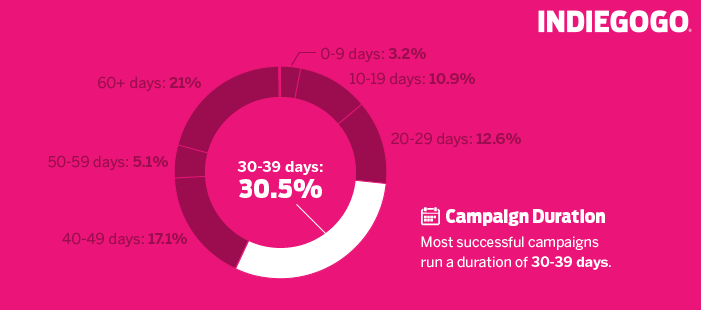
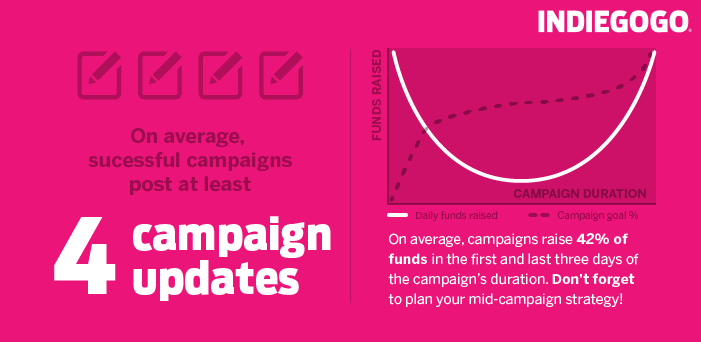

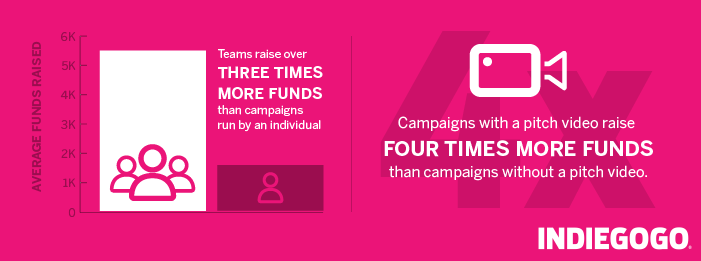
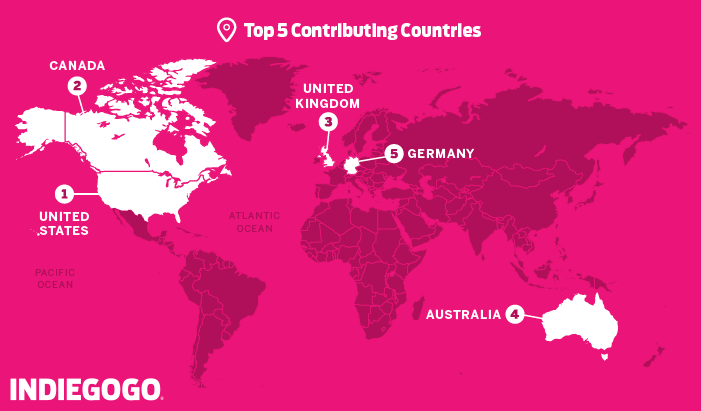
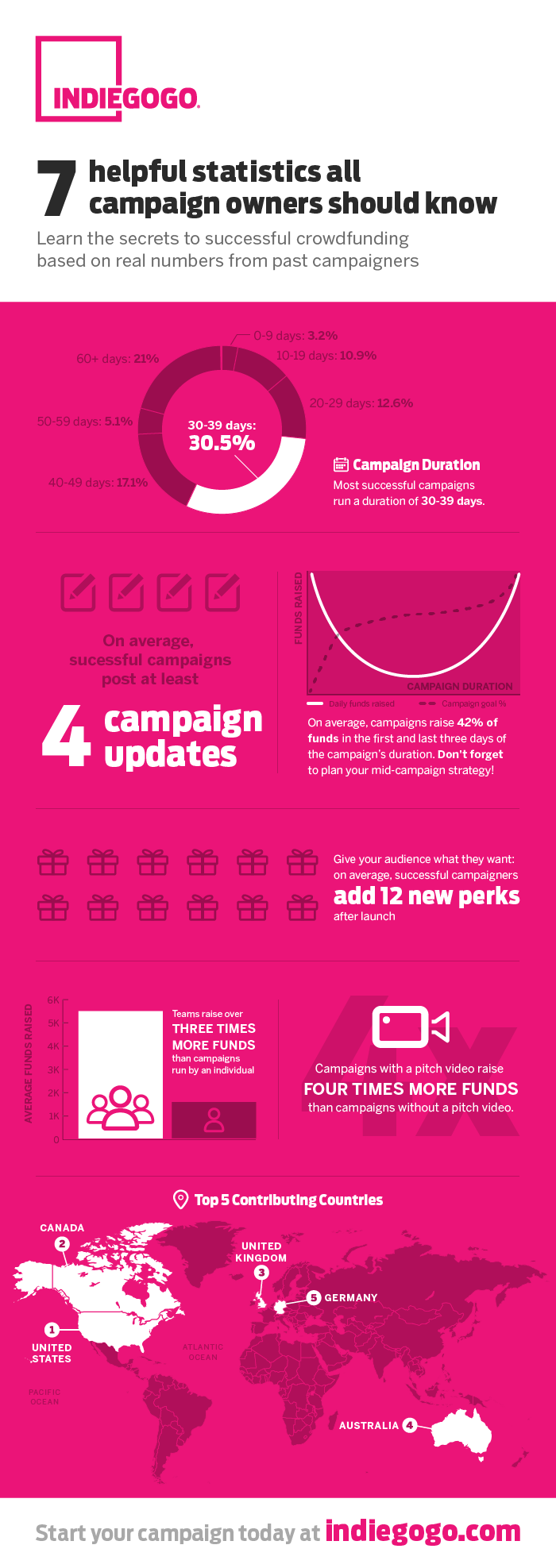
That data and statistics can be quite valuable to anyone thinking about starting a campaign. There are number of things to consider when thinking about crowdfunding. It’s important to keep your campaign shorter if possible, usually the contributions will come in swarms during 2-3 day periods. But also in these early stages, think about presentation. Consultant with close friends, family and maybe even people who have ran successful campaigns.
Make sure to present a good video, clear data and get to the point with your audience. Work on establishing a community or followers well before undergoing your campaign as well.
Some of these stats don’t back up the conclusion. 30-39 days might not be the most effective time frame: it might just be the most popular. Maybe the reason very relatively few people succeed with a 0-9 day campaign is because relatively few people attempt it. If 1% of users attempt it and they make up 3.2% of the successful campaigns, then that might actually mean it is the most effective. Whereas maybe 90% of people attempt 30-39 day campaigns and they succeed 30.5% of the time. The stat included in the article is basically only a measure of which duration is most popular. The same with the stat about working with a team. People working in teams probably tend to have goals that require more money, and, once again, this article doesn’t address popularity. People working in teams have raised 3x as much as people working solo. Okay. Are there more people working in teams than are working solo? Are they reaching their goals more often? That’s admittedly more nitpicky. Working in groups in many situations in good sense, and we don’t always want to do it, but that point could be made just as well without a loosely related stat.